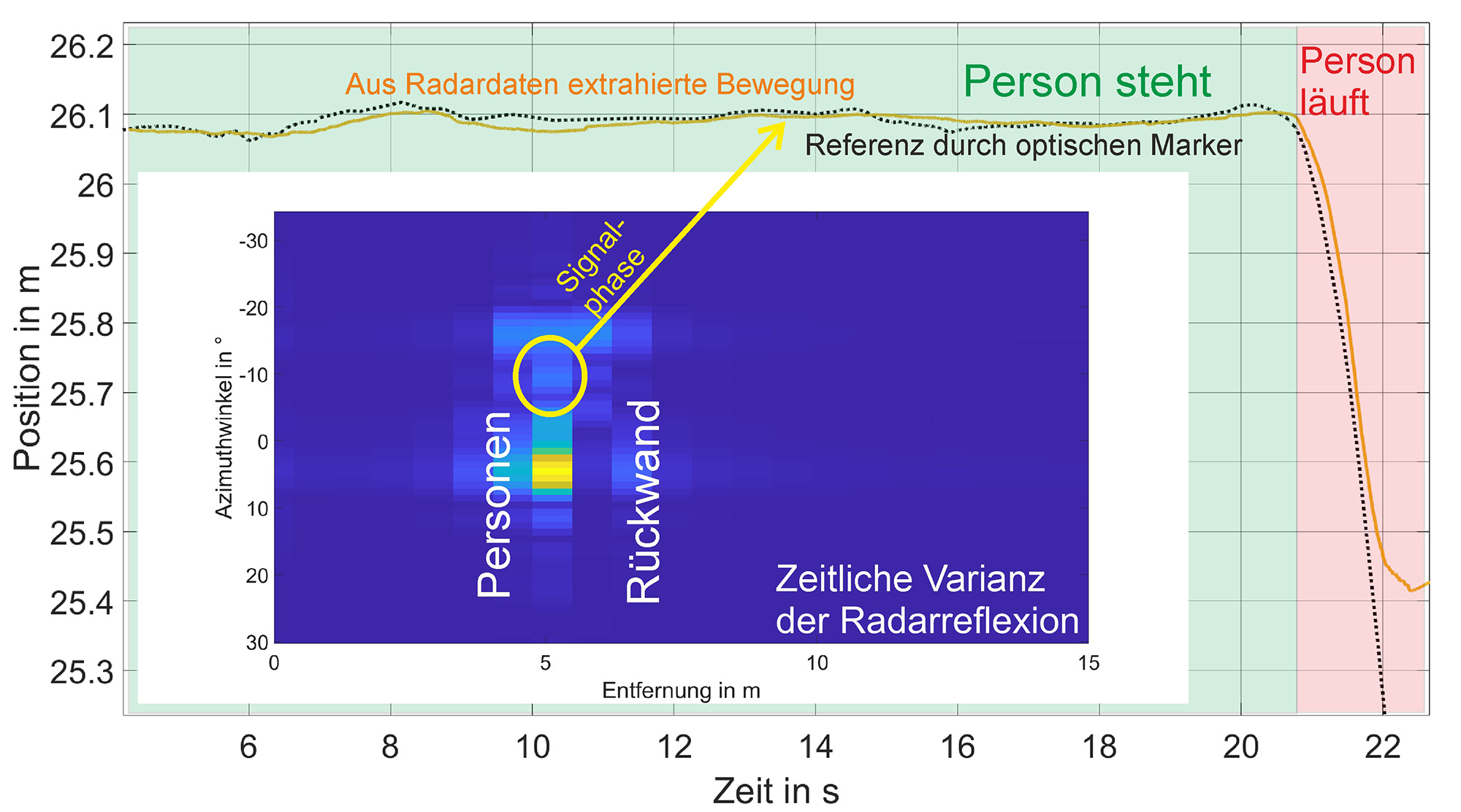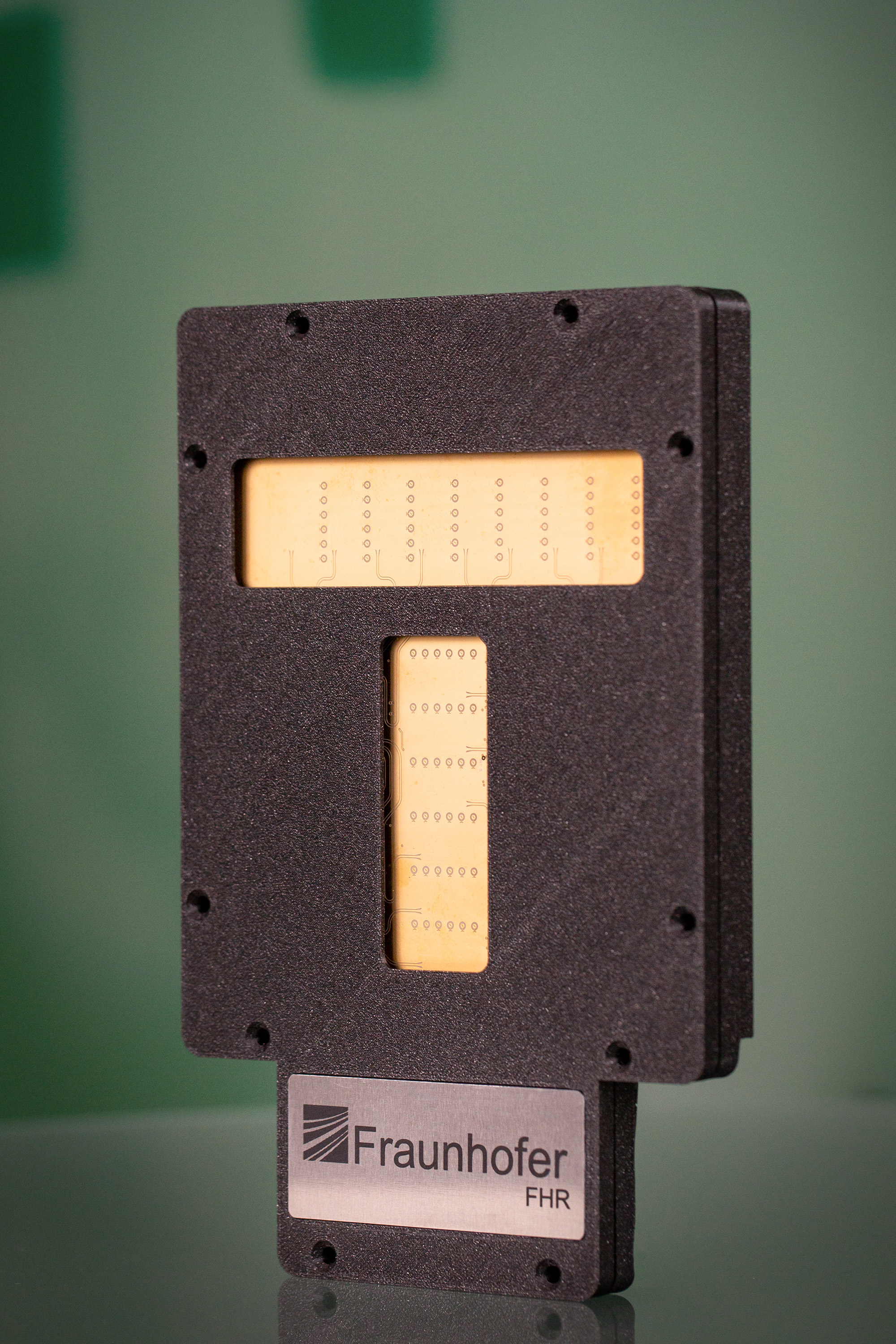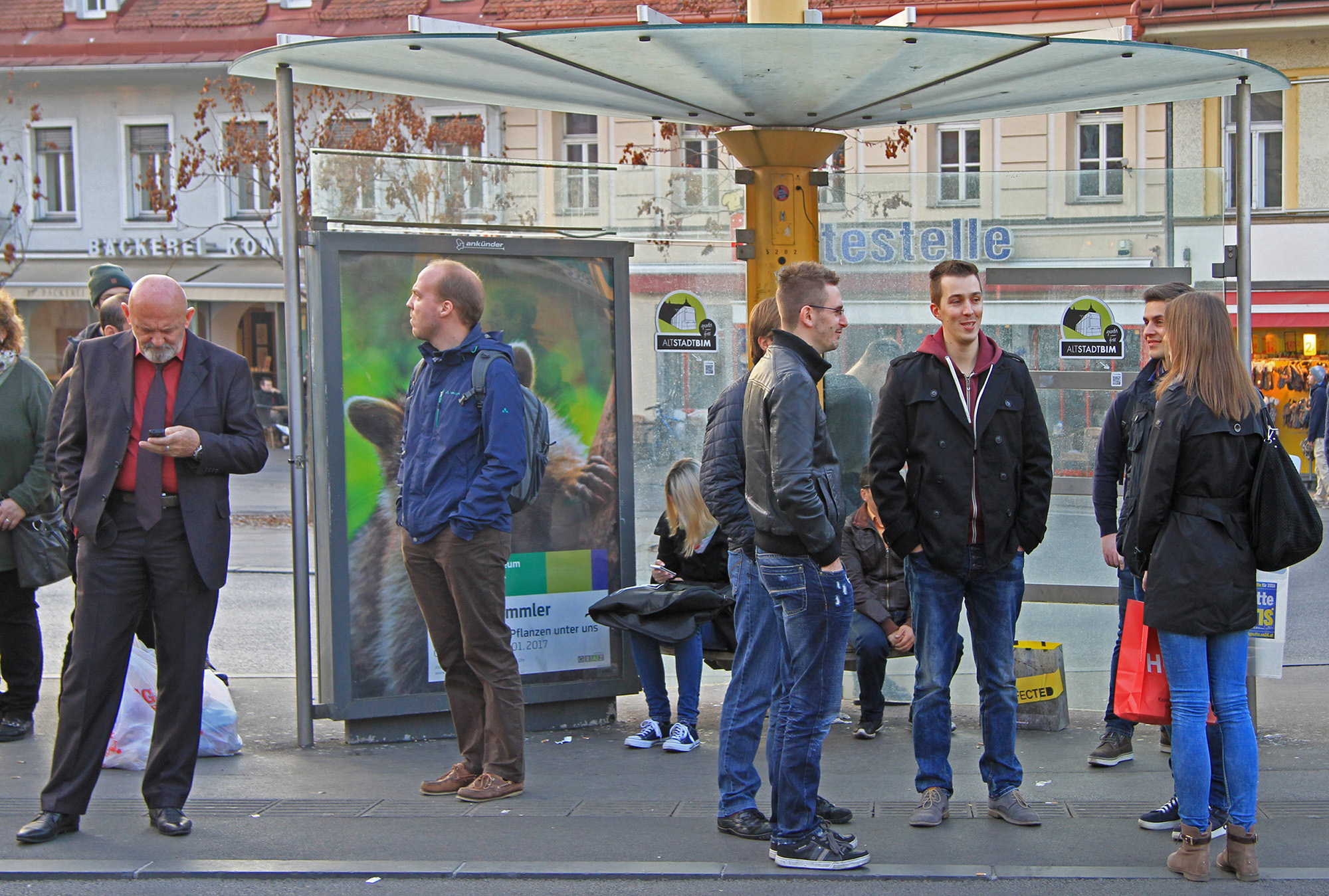More safety on the roads
Pedestrians, cyclists, streetcars, cars – traffic can become confusing at times. In the future, a new type of radar sensor system will be able to warn drivers in good time if somebody is steadily approaching their car. It was developed by Fraunhofer Institutes FHR, IIS and IVI. In a follow-up project, the system will be able to interpret entire street scenes via artificial intelligence, thus ensuring even greater safety.



People react quickly – but sometimes not quickly enough. For example, if a child runs across the road to catch a bus that has stopped on the opposite side, a car driver is very unlikely to be expecting this to happen – with potentially extremely serious consequences. Although sensors can detect when people or other objects are close to a vehicle and warn the driver, the warning would come too late in the case of a child running into the road. In the HORIS project, the FHR Fraunhofer Institute in Wachtberg, IIS in Erlangen and the "Connected Mobility and Infrastructure" IVI Application Center in Ingolstadt have set themselves the goal of improving road safety – particularly in situations involving large numbers of road users. Instead of a proximity warning as in the past, reliable behavior prediction is to be realized. This means that if a child runs onto the road, the sensors should detect this at a stage when the driver can still react and bring the car to a halt before an accident happens.
Speed not distance
In doing so, the Fraunhofer research team is building on existing technology from the automotive industry, using both the same radar chip technology and the same components for the sensors. The main development work lies in evaluating the data, i.e. in the algorithms. The highlight: While currently installed sensors analyze how far a person is from the car, the new system relies on measuring the speed. Thus, an imminent danger is detected at the very beginning of a movement, and valuable, sometimes even life-saving time is gained. The algorithms recognize an object as a person, set a marker and determine the speed and direction in which the person is moving. Are they moving toward the radar sensor and, hence, toward the road? There is a fine line between triggering a false alarm and failing to issue a warning in time, but the radar sensor can overcome this problem by taking around a hundred measurements every second. Only when the person is moving consistently towards the road at a certain minimum speed over several measurements is an alarm triggered to warn the driver.
The three institutes have divided the development tasks in accordance with their competencies: Fraunhofer FHR is concentrating on the technological side and is developing the algorithms, while Fraunhofer IVI is designing suitable test scenarios. Meanwhile, Fraunhofer IIS is taking care of the camera technology and motion detection and providing the measurement halls.
Demonstration planned for spring 2021
The project ran from May to December 2020. The demonstrator is ready: It can currently detect up to eight people at the same time and determine whether they are moving toward the road. It will measure a street scene in a test run at the beginning of 2021. An overall test and a presentation for interested customers from industry is planned to take place in Ingolstadt in the second quarter of 2021.
However, the collaboration between the three Fraunhofer Institutes is far from over. They plan to build on the HORIS results in a follow-up project which aims to further optimize the sensor, this time not just looking at whether someone is moving toward the road, but also taking account of the issues determining how and why they might make that move. As well as detecting that someone is approaching the car, the system will use artificial intelligence and an additional infrared camera to understand the overall situation. The aim here is to improve the system's reaction time. If, for example, a ball rolls into the road, a child may well follow it a few seconds later. If a bus stops, it is possible that someone will rush across the road to catch it. By detecting the whole situation rather than just the movements of individual people, the system can save valuable extra seconds when warning the driver and help prevent dangerous situations. In addition, the situational awareness feature is designed to increase accuracy and thus further reduce false alarms. And to further increase the safety of all road users in the long term.